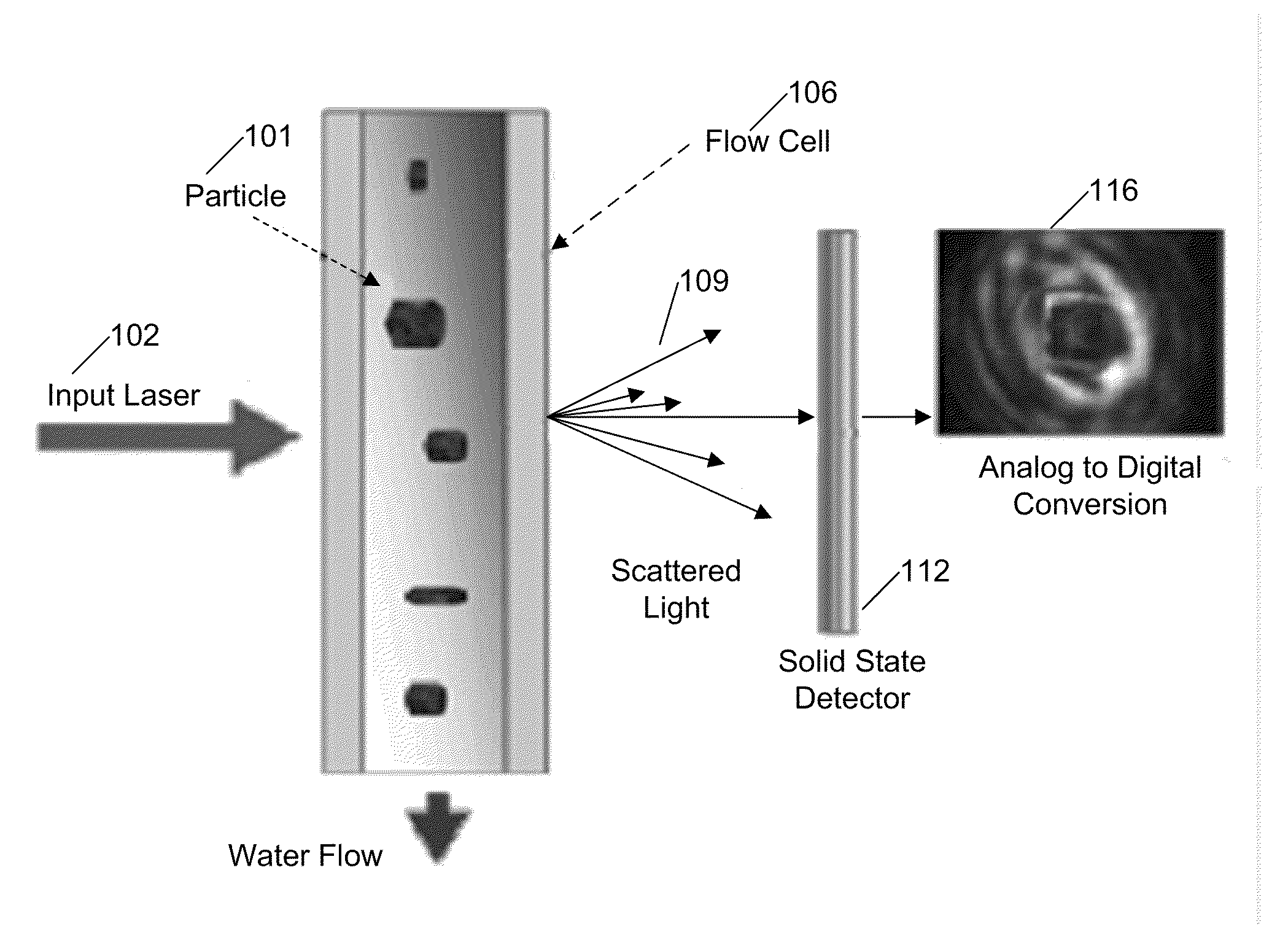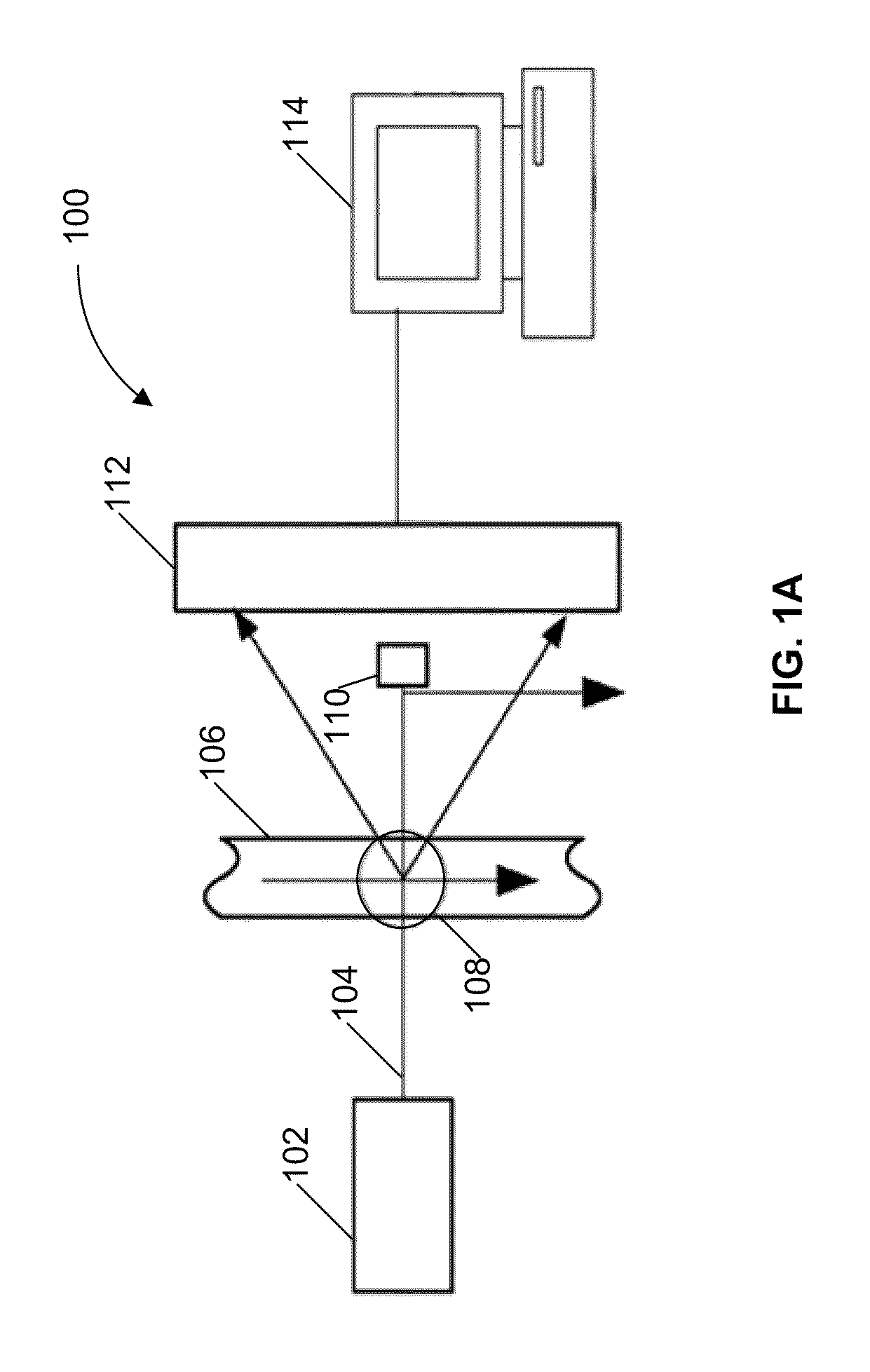Systems and methods for detecting normal levels of bacteria in water using a multiple angle light scattering (MALS) instrument
a multi-angle light scattering and bacteria technology, applied in the field of multi-angle light scattering instruments for detecting normal levels of bacteria in water, can solve the problems of inability to detect microbial levels in real-time and on-line, potentially harmful microorganisms, and hpc bacteria, and achieve the effect of monitoring the life and condition of the ro membran
- Summary
- Abstract
- Description
- Claims
- Application Information
AI Technical Summary
Benefits of technology
Problems solved by technology
Method used
Image
Examples
Embodiment Construction
.”
BRIEF DESCRIPTION OF THE DRAWINGS
[0016]Features, aspects, and embodiments of the inventions are described in conjunction with the attached drawings, in which:
[0017]FIG. 1A is a diagram illustrating an example embodiment of a particle detection system;
[0018]FIG. 1B is an animated image illustrating an example embodiment of a particle detection system;
[0019]FIGS. 2A, 2B and 2C show representative images from a 2, 4, and 8 micron diameter polystyrene spheres, respectively, obtained using a particle detection system in accordance with one embodiment;
[0020]FIGS. 3A, 3B and 3C show representative images from Cryptosporidium, dirt, and Giardia, respectively obtained using a particle detection system in accordance with one embodiment;
[0021]FIG. 4 shows a representative image from E. coli obtained using a particle detection system in accordance with one embodiment;
[0022]FIGS. 5-7 are diagrams illustrating a technique for using illumination incident at an angle in a light scattering detecti...
PUM
| Property | Measurement | Unit |
|---|---|---|
| diameter | aaaaa | aaaaa |
| diameter | aaaaa | aaaaa |
| diameter | aaaaa | aaaaa |
Abstract
Description
Claims
Application Information
 Login to View More
Login to View More - R&D
- Intellectual Property
- Life Sciences
- Materials
- Tech Scout
- Unparalleled Data Quality
- Higher Quality Content
- 60% Fewer Hallucinations
Browse by: Latest US Patents, China's latest patents, Technical Efficacy Thesaurus, Application Domain, Technology Topic, Popular Technical Reports.
© 2025 PatSnap. All rights reserved.Legal|Privacy policy|Modern Slavery Act Transparency Statement|Sitemap|About US| Contact US: help@patsnap.com



